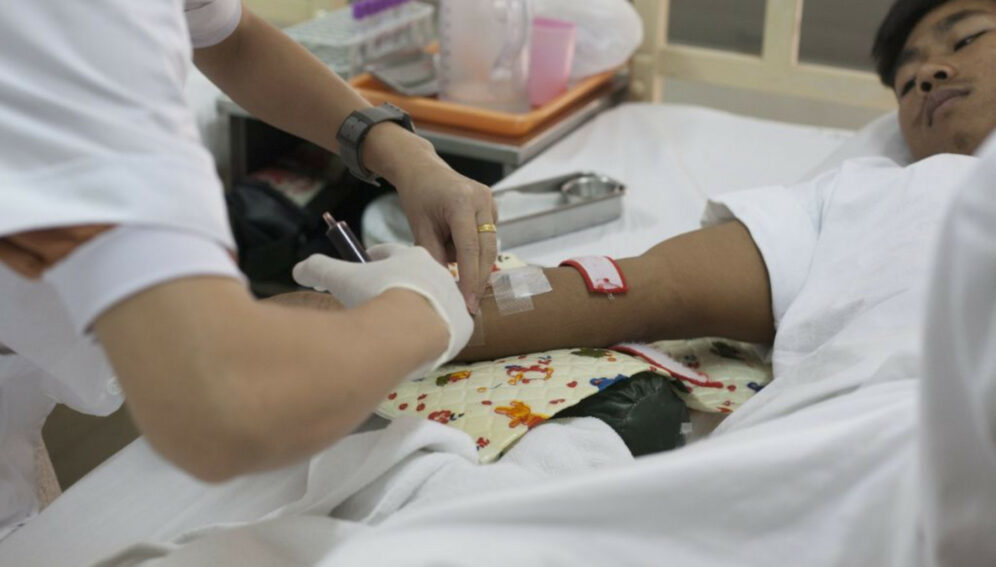22/07/22
Weather factors key to ‘predicting’ dengue outbreaks

By: Sanjeet Bagcchi
Send to a friend
The details you provide on this page will not be used to send unsolicited email, and will not be sold to a 3rd party. See privacy policy.
[NEW DELHI] Weather factors, including rainfall, temperature and ocean warming, play an important role in determining the activity of the Aedes mosquito which spreads dengue and other viral diseases like yellow fever, chikungunya and Zika, according to a new study conducted in Sri Lanka.
Dengue is widespread throughout the tropics, with local variations in risk influenced by climate parameters as well as social and environmental factors, according to the WHO. It is spread to humans through the bite of infected female mosquitoes of the Aedes aegypti and A. albopictus species.
The incidence of dengue across the world has increased substantially with nearly 50 per cent of the global population currently at risk of the disease and an estimated 100 to 400 million infections each year, says the WHO.
“Climate factors have the potential to serve as predictors of mosquito activity at different times and may enable us to quantify the risk and implement effective mosquito control interventions before a dengue epidemic emerges”
Prasad Liyanage, Sri Lanka Ministry of Health and Umea University
While ocean warming and temperature can predict the activity of Aedes mosquitoes with a lead time of one to six months, the amount of rainfall can project Aedes mosquito prevalence in the same month, says the study published July in The Lancet Planetary Health. Dengue fever generally occurs after rainy weather when conditions are optimal for the breeding of mosquitoes. Hotter temperatures were associated with increases in mosquitoes one to two months later. The warmer ocean temperatures predicted increases in mosquitoes with a five- to six-month delay, the study found.
“Knowing the behaviour and natural habitat of mosquitoes and their association with climate factors is important for prediction [of Aedes mosquito-borne diseases such as dengue], and also for planning effective mosquito control interventions,” Prasad Liyanage, lead author of the study, tells SciDev.Net.
“Climate factors have the potential to serve as predictors of mosquito activity at different times and may enable us to quantify the risk and implement effective mosquito control interventions before a dengue epidemic emerges,” said Liyanage, an affiliate of the Sri Lanka Ministry of Health and the Umea University, Sweden.
Since there is no effective dengue vaccine available, controlling mosquito populations is considered the most effective strategy to prevent the virus spreading, the researchers say.
The study evaluated three weather variables between 2010 and 2018: temperature, rainfall and ocean warming. Ocean warming was assessed through a technical measure called Oceanic Niño Index which determines whether Pacific Ocean waters are warmer or cooler than average.
During the eight-year period, the researchers noted three events where unusually warm ocean temperatures occurred. They also compared climate variables with surveillance data relating to Aedes mosquitoes.
Yesim Tozan, a co-author of the study and assistant professor of global health at the US-based NYU School of Global Public Health, says health authorities should promote and invest in Aedes mosquito surveillance to control Aedes-borne diseases.
“Climate services and public health should work together to mitigate the potential increase in the risk of mosquito-borne diseases, which is predicted to occur under various climate change scenarios,” she tells SciDev.Net.
According to Tozan, dengue transmission is expected to intensify due to climate change. “If we can use climate and weather data to predict seasonal patterns of mosquitoes, this timely information would allow public health authorities to proactively manage mosquito control operations,” she adds.
Thekkekara Jacob John, former professor of clinical virology at the Christian Medical College in Vellore, India, says: “This study adds specific details to our common knowledge that Aedes breeding is modulated by climate — rainfall and temperature. The benefits of collection and analysis of already available data for understanding the correlation between specific climatic factors and increasing breeding are well illustrated.”
This piece was produced by SciDev.Net’s Asia & Pacific desk.















